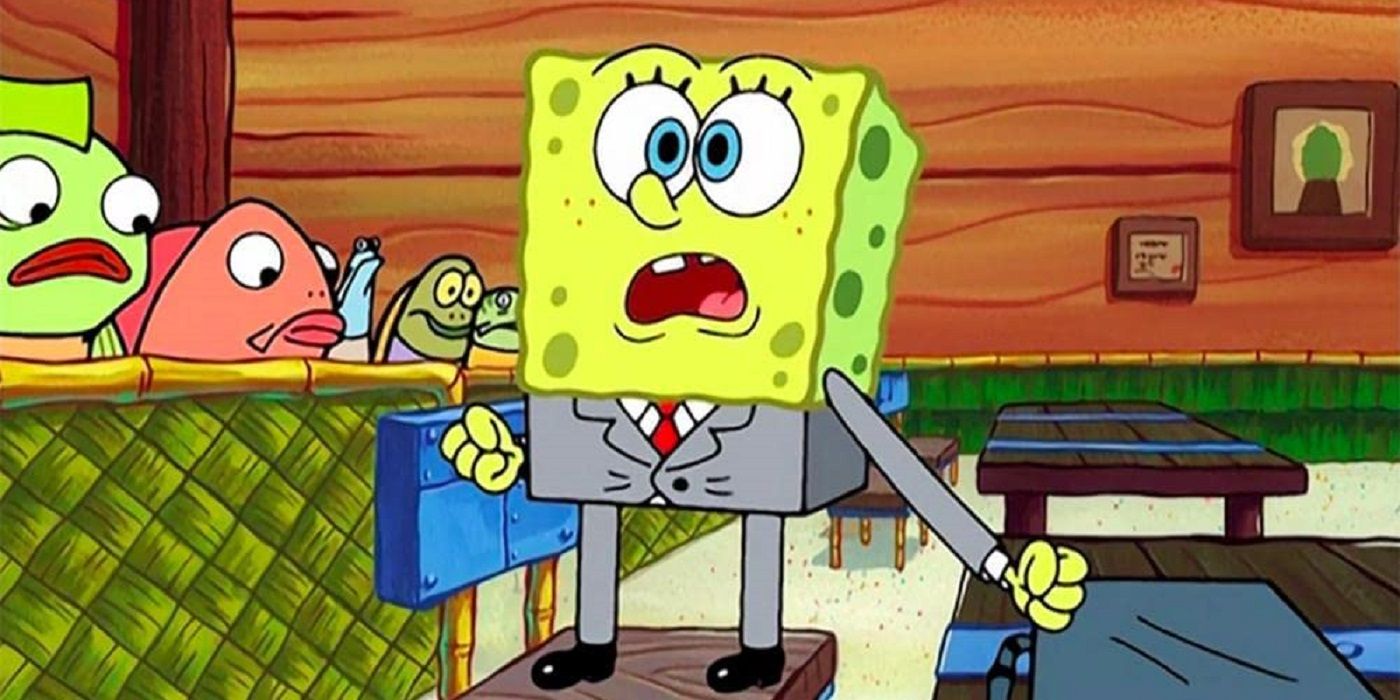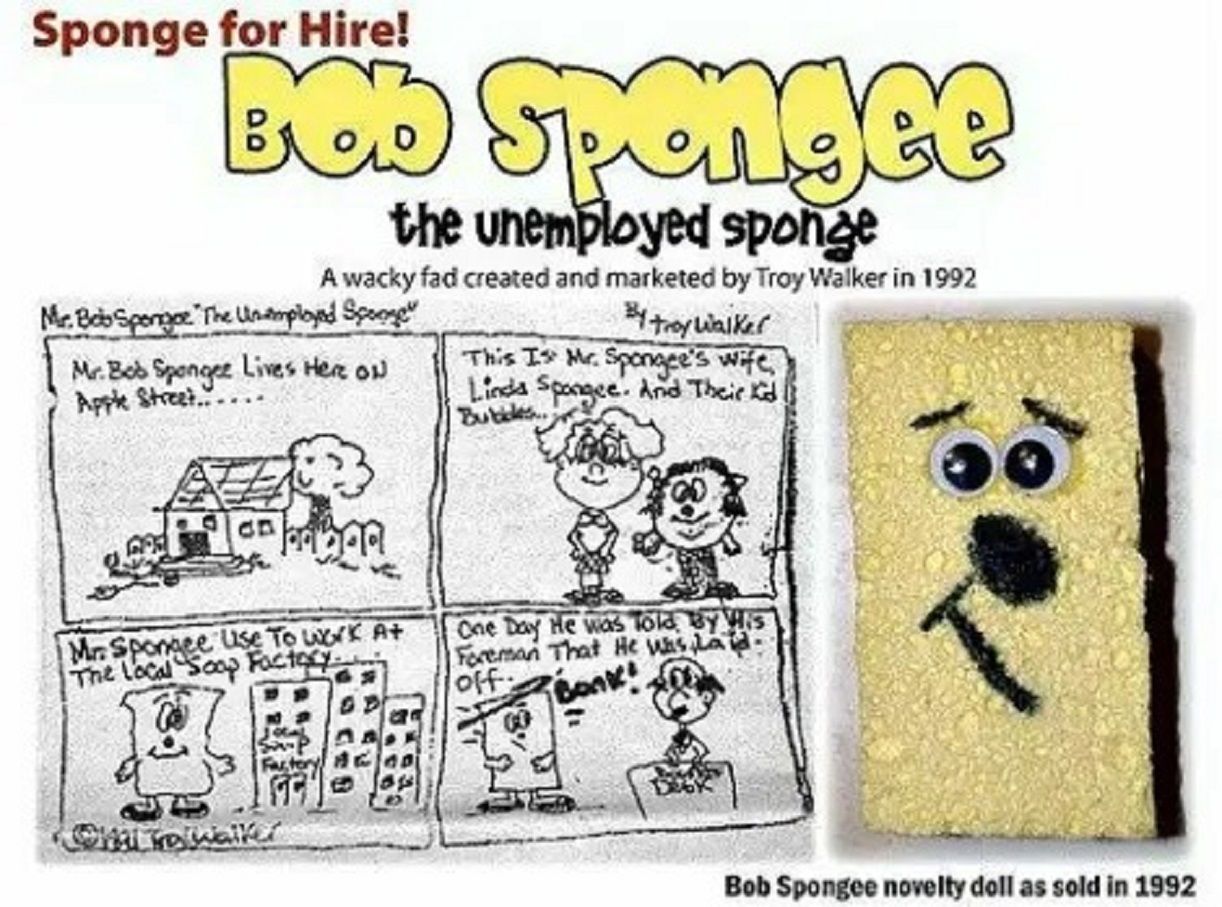Welcome to the 885th installment of Comic Book Legends Revealed, a column where we examine three comic book myths, rumors and legends and confirm or debunk them. This time, our second legend is about whether SpongeBob SquarePants was based on a comic strip/novelty toy named Bob the Spongee.
A general rule of thumb is that the more popular you get, the more likely you are to get sued at one point or another. This is especially true for creative endeavors, as there's typically SOMEbody out there that has a claim that you took your idea from them, whether it is true or not. That was the case with the iconic children's animated character, SpongeBob SquarePants, created by the late, great Stephen Hillenburg.
In an old Comic Book Legends Revealed, I explained the surprising comic book origins of SpongeBob SquarePants, as Hillenburg came up with the character when trying to do an informative comic book for kids at the Orange County Marine Institute (now known as the Ocean Institute), when Hillenburg was working there. As he recalled, "We taught tide-pool ecology, nautical history, diversity and adaptation. Working there, I saw how enamored kids are with undersea life, especially with tide-pool creatures" Being a talented artist, Hillenburg was often asked to draw stuff for the Institute. Well, one day one of his supervisors said that he should use his skills to draw an educational comic book for kids. "I drew it while teaching at what is now called the Ocean Institute, to help explain the life of organisms living in tide pools along the Southern California coast in an entertaining way."
However, a man named Troy Walker believed that SpongeBob's origins were in a whole other area, a character that Walker had invented named Bob Spongee!
Who is Bob the Spongee and what is the claim against SpongeBob SquarePants?
In the lawsuit, Walker v. Viacom International, Inc., Walker explained how he believed his creation was stolen. In 1991, He had created a comic strip about a character named Bob Spongee...
The four-panel, black and white comic strip was titled "Mr. Bob Spongee, The Unemployed Sponge." The main character is Mr. Bob Spongee, a single dimension, rectangular-shaped kitchen sponge with arms, legs and shoes, round googly eyes, line eyebrows, a dot for a nose and a line for a mouth. According to the strip, he lives with his wife Linda and daughter Bubbles on Apple Street, in a small house with a pitched roof and picket fence. The third panel of the strip says, "Mr. Spongee Use [sic] To Work At The Local Soap Factory . . .", and the fourth and final panel says, "One Day He Was Told By His Foreman That He Was Laid Off..."
Later in 1991, Walker then created a novelty toy sponge that he would package with the comic strip, and he sold his "Sponge for Hire" throughout the San Fransciso Bay area in 1992. He ran ads for the character in the Oakland Tribune newspaper. Walker claims that his character, coming before SpongeBob SquarePants, should be protected and that SpongeBob SquarePants was too similar and thus a violation of his intellectual property rights.
How did the courts respond to the claims against SpongeBob SquarePants?
The court did not find Walker's claims compelling. First, it declared that Bob Spongee WASN'T a distinctive character, noting:
Not only is the comic strip character not distinctive, but Mr. Bob Spongee is not consistently depicted between the comic strip, the sponge doll, and the Oakland Tribune advertisement. The sponge "doll" was produced in three different colors, had movable "googly eyes," and did not have arms or legs, while the Oakland Tribune advertisement version does not even appear to be a sponge. Instead, the drawing looks more human, has hair, ears, different shaped eyes and nose, is wearing a hat and a shirt, and wearing different shaped shoes than in the comic strip. This lack of consistency defeats plaintiff's claim that the stand-alone character of "BOB SPONGEE" is protected.
It then explained that Walker had not properly demonstrated that Hillenburg had access to Bob the Spongee to even copy him in the first place!
Finally, the court determined that there was no true similarity between the two characters, explaining:
Here, the similarities between "Mr. Bob Spongee" and SpongeBob SquarePants are much less striking. Plaintiff emphasizes the facts that both characters use the name "Bob" and are anthropomorphized sponges; however, not only is "Bob" a common name, but more importantly, defendant Hillenburg has submitted uncontroverted evidence that he created "Bob the Sponge," an anthropomorphized sea sponge, in 1989 — two years before plaintiff created "Mr. Bob Spongee."The only way in which the two characters are physically similar is that they are both rectangular anthropomorphic sponges, with arms and legs, and big round eyes. However, these are simply stock elements that flow from the idea of humanizing a sponge. Moreover, the differences between the comic strip version of Mr. Bob Spongee — the only version that is copyrighted — and SpongeBob SquarePants are numerous
It added that it found the idea that the stories were similar was also wrong, stating "Far from being strikingly similar, the two stories — to the extent that the comic strip can be said to have a story — are opposite."
In the end, the court threw the case out of court, ordering a motion of summary judgment on behalf of Viacom.
So no, Bob Spongee was not the inspiration between SpongeBob SquarePants.
CHECK OUT A TV LEGENDS REVEALED!
In the latest TV Legends Revealed - Did the crew of Three's Company hold a "funeral" for Suzanne Somers after she left the series?
Be sure to check out my Entertainment Legends Revealed for more urban legends about the world of film and TV.
Feel free to send suggestions for future comic legends to me at either cronb01@aol.com or brianc@cbr.com.



